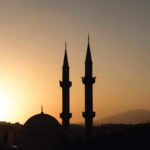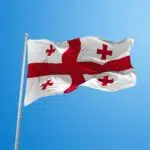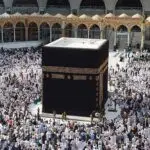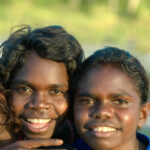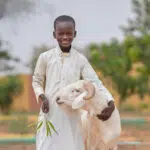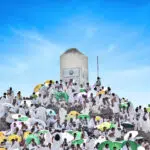Guyana Independence Day is observed on May 26. The public holiday commemorates Guyana’s independence from the British on May 26, 1966. The celebrations feature traditional food, arts, and a music festival, featuring fashion shows, music, food, dance, and other cultural activities. On the eve of Independence Day, there is a flag-raising ceremony at Durban Park, followed by a presidential address to the nation. In addition, concerts, performances, and a fireworks display are held at midnight to usher in the special day.
History of Guyana Independence Day
In pre-colonial Guyana, the country was populated by nine indigenous tribes, including the Akawaio, Macushi, Waiwai, Arawak, Patamona, Warrau, Carib, Wapishana, and Arekuna. However, the most dominant were the Lokono and Kalina. In 1498, Christopher Columbus became the first known European to sight Guyana during his voyage. In 1581, the Dutch began establishing several colonies, including Pomeroon in 1581, Essequibo in 1616, Berbice in 1627, and Demerara in 1752. Between 1792 and 1815, during the French Napoleonic wars and revolutionary wars, the French occupied the country. In 1796, the British took over and in 1814, the areas of Demerara, Berbice, and Essequibo were ceded to them by the Dutch. In 1831, the united colonies of Demerara-Essequibo and Berbice became a colony known as British Guiana.
During the 1830s, the British finally abolished the slave trade in the country. In 1953, they also established a new constitution granting universal adult suffrage, a ministerial system, and a bicameral legislature. Though the constitution was suspended the same year as a result of the election of a seemingly pro-communist political leader, it was restored in 1957. A new coalition government formed by the Indo-Guyanese party and the Afro-Guyanese party was formed around 1964. Then, on May 26, 1966, the colony of British Guiana declared its independence under the new name ‘Guyana.’
Guyanese Independence Day is one of the most important national holidays in the country. It not only commemorates a momentous day in history but is also a representation of the Guyanese cultural heritage. The week-long celebration begins with a two-day Guyana Food, Arts, and Music Festival, featuring fashion shows, music, food, dance, and other cultural activities. On the eve of Independence Day, there is a flag-raising ceremony at Durban Park, followed by a presidential address to the nation. In addition, concerts, performances, and a fireworks display are held at midnight to usher in the special day.
Guyana Independence Day timeline
The Dutch establish colonies in Guyana, including Pomeroon, Essequibo, Berbice, and Demerara.
The Dutch cede parts of Guyana to the British under the Anglo-Dutch Treaty.
The colonies of Demerara-Essequibo and Berbice become the colony of British Guiana.
Guyana gains independence from the British on May 26.
The British introduce a new constitution granting universal adult suffrage, a ministerial system, and a bicameral legislature.
Guyana Independence Day FAQs
When did Guyana become a republic?
Guyana became a republic on February 23, 1970.
Who is the president of Guyana?
The president of Guyana is Irfaan Ali.
What are the other languages spoken in Guyana?
Although English is the only official language, Guyanese Creole, Guyanese Hindustani, and other Amerindian languages are also spoken in the country.
Guyana Independence Day Activities
Take an online tour
On Independence Day in Guyana, some companies organize virtual celebrations. This may include a message from leading government officials and selections of other important resources.
Learn more about Guyana
Guyana is one of the most fascinating countries in South America. Its rich history and cultural diversity are definitely worth learning more about.
Share with others
Share this article with others. Share a link or a post online to inform other people about these interesting facts.
5 Important Facts About Guyana
Guyana is a distinct South American country
Guyana is the only South American country with English as its official language.
Guyana inspired “The Lost World”
Sir Arthur Conan Doyle’s “The Lost World” was inspired by the tepui landscape of Guyana, even though there have been no discoveries of dinosaur remains in the country.
Guyana has the largest waterfall
The Guyanese Kaieteur Falls is the world’s largest single-drop waterfall based on the volume of water flowing from it.
Guyana has impenetrably thick forests
In South America, Guyana has one of the largest rainforests that have hardly been explored because of how vast and remote they are.
Guyana is highly forested
About 70% of Guyana is covered with rainforest.
Why We Love Guyana Independence Day
Guyana is free
Guyanese Independence Day commemorates the inception of the country’s freedom from colonialism. Now they exercise the right to self-determination and self-government, which is the birthright of every country.
It’s a show of cultural pride
Guyanese Independence Day is a day for proud Guyanese to celebrate their rich cultural heritage. With colorful Creole food, music, and lively entertainment, the people commemorate one of the most significant events in their history.
The independence movement was peaceful
Although conflict existed between the ethnic divisions, no independence war marred the nation’s past. There was no war between the British army and the Guyanese, which is refreshing and commendable.
Guyana Independence Day dates
| Year | Date | Day |
|---|---|---|
| 2026 | May 26 | Tuesday |
| 2027 | May 26 | Wednesday |
| 2028 | May 26 | Friday |
| 2029 | May 26 | Saturday |
| 2030 | May 26 | Sunday |


